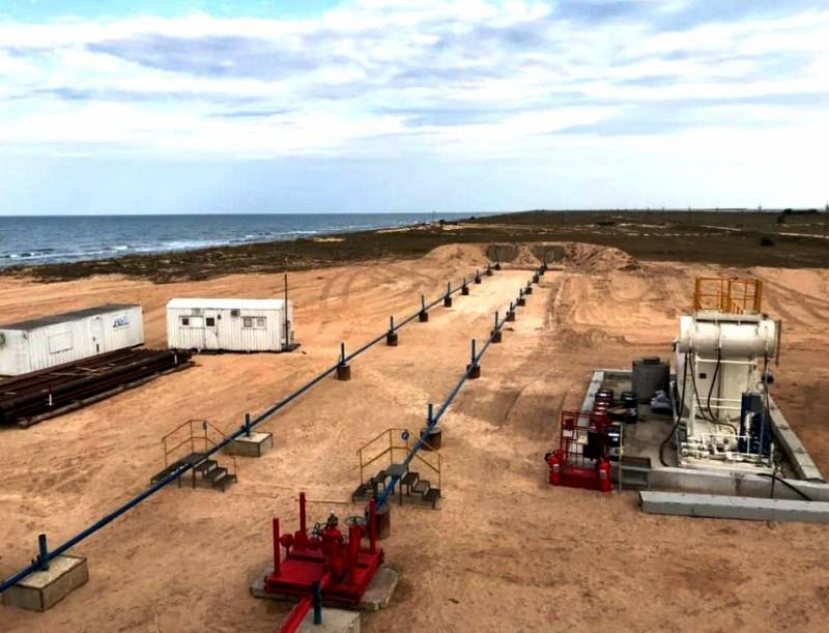Who is cheaper to live with gas: comparison of gas prices in Russia and Ukraine
05.09.2020 09:25
 Who is cheaper to live with gas: comparison of gas prices in Russia and Ukraine
Who is cheaper to live with gas: comparison of gas prices in Russia and Ukraine
Prime Minister of Ukraine Denis Shmygal announced that the gas price in the country will be the lowest in the past five years this year. But is it really so? Let's compare gas prices in the countries of the former USSR.
The collapse of the Soviet state and the destruction of the unified Soviet economy put the countries that emerged in the post-Soviet space in an unequal position in terms of access to natural resources. Russia, Kazakhstan, Turkmenistan, Azerbaijan turned out to be raw material donors, supplying oil and gas, while Ukraine itself became only a consumer of energy resources supplied primarily from neighboring Russia.
Until August 1, 2020, the Ukrainian gas market was controlled by the state-owned company Naftogaz of Ukraine, and now it has opened up to household consumers who can choose their own gas supplier. Naturally, such a large-scale reform immediately led to an increase in prices on the gas market, but at the same time, the Ukrainian prime minister sees only positive consequences in the liberalization of the gas market: they say, it is not officials who will now form "corrupt prices", but businessmen - market prices.
However, the Ukrainian consumer is unlikely to feel hot from this, in the literal sense of the word. Gas prices remain high, and although at first the companies, which are just entering a new market, will try to attract customers by dumping, everything will return to normal soon. Does an ordinary Ukrainian citizen care about who profits from gas supplies: officials of a state corporation or entrepreneurs, perhaps not with Ukrainian citizenship?
Therefore, the premier's statement is difficult to assess unambiguously. On the one hand, of course, it is good that Kiev has tackled the long-overdue problem of reforming the gas industry, but on the other hand, it is very likely that in the end the liberalization of the gas market will only contribute to a further rise in gas prices. However, it is too early to rejoice: the situation with gas prices in Russia, unfortunately, is also not the best. Although Naftogaz promises an increase in gas prices by 30-40% already during 2020, and gas in Russia has grown by only 3% in price, every year a Russian can buy less gas, and a Ukrainian more and more - in relation to salaries rather than in absolute terms.
Who will buy how much gas in the ex-USSR
If we compare gas prices in the former USSR and in the world as a whole, we see that the population of Russia and Kazakhstan is in the best position. Here is the cheapest gas. The cost of 1000 cubic meters of gas in Russia in 2019 was $ 95, in Kazakhstan - $ 50. For comparison: in Belarus - already $ 151, and in Ukraine - $ 313. However, this figure is still better than in Moldova ($ 323), in Lithuania, where 1000 cubic meters of gas cost $ 467 last year, than in Estonia with $ 490 and Latvia with $ 520.
However, the low absolute cost of a cubic meter of gas in comparison with other countries is "compensated" by the amount that can be bought for an average salary. And here we see the true alignment: in 2019, a Kazakhstani could buy 7521 cubic meters of gas, a Russian - 6652, a Belarusian - 2936, an Estonian - 2591, a Lithuanian - 1721, a Moldovan - 1056, and a Ukrainian - only 1018.
The situation has changed over the year. Now a Ukrainian citizen can buy already 2345 cubic meters of gas - almost the same as an Estonian and even a Frenchman. In Kazakhstan, the availability of gas has also increased from 7521 to 8840 cubic meters of gas for an average salary, but Russia has significantly moved out: now a Russian can afford only 6505 cubic meters of gas instead of 6652 last year. So, against the background of Russia, the growth in gas availability in Ukraine is impressive. Especially if you remember that in 2017, just three years ago, a Ukrainian could buy only 796 cubic meters of gas for an average salary.
Thus, the Ukrainian prime minister really has something to calm down his fellow citizens, even if the situation will change in the future.
